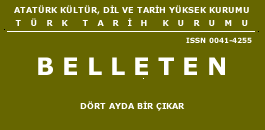Seleucid Coins Online is [mostly] complete and published
After a few months of continuous work on normalizing data and fixing some type numbering issues, Seleucid Coins Online has been updated and completed (with the exception of some typos or missing type/subtype records we might invariably find). There are now 2,519 total coin types from Seleucus I until late Roman Republican and early Augustan types issued with under the stated authority of Philip I (posthumously). There are about 6,000 subtypes nested hierarchically under these parent types, and more than 2,000 physical specimens from the ANS, Berlin, Muenster, Harvard Art Museums, and the Fralin Museum of Art at the University of Virginia have been linked to SCO, either at a higher parent type level (for worn coins) or at the specific subtype when an accurate identification can be made. Oliver Hoover is still working on cataloging later Seleucid coins in the ANS collection, so the coverage will be expanded in the near future.
Seleucid tetradrachms
Since the browse page is built logically around parent type numbers rather than the original version of SCO, which was not ordered hierarchically, the images displayed to the right of the descriptive summary include both parent and subtype specimens. As a result, the photographic coverage of parent types is enhanced. At present about 25% of all Seleucid types have at least one physical specimen (which is almost certainly photographed, since our NEH-funded Hellenistic Royal Coinages project has funding to catalog and photograph our entire Seleucid collection). To reiterate: we still have more cataloging work to do for the later Seleucid coinage. The photographic coverage can be derived from a SPARQL query of Nomisma.org.
This project, along with PELLA and the impending Ptolemaic Coins Online, should prove to be a valuable resource for Hellenistic numismatics to students, scholars, general hobbyists, and archaeologists and museum professionals in aid of identifying and cataloging specimens from museums or excavations.
Geographic distribution of Seleucid coinage from East Greece to Ai Khanoum.























